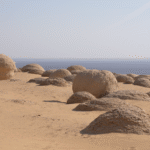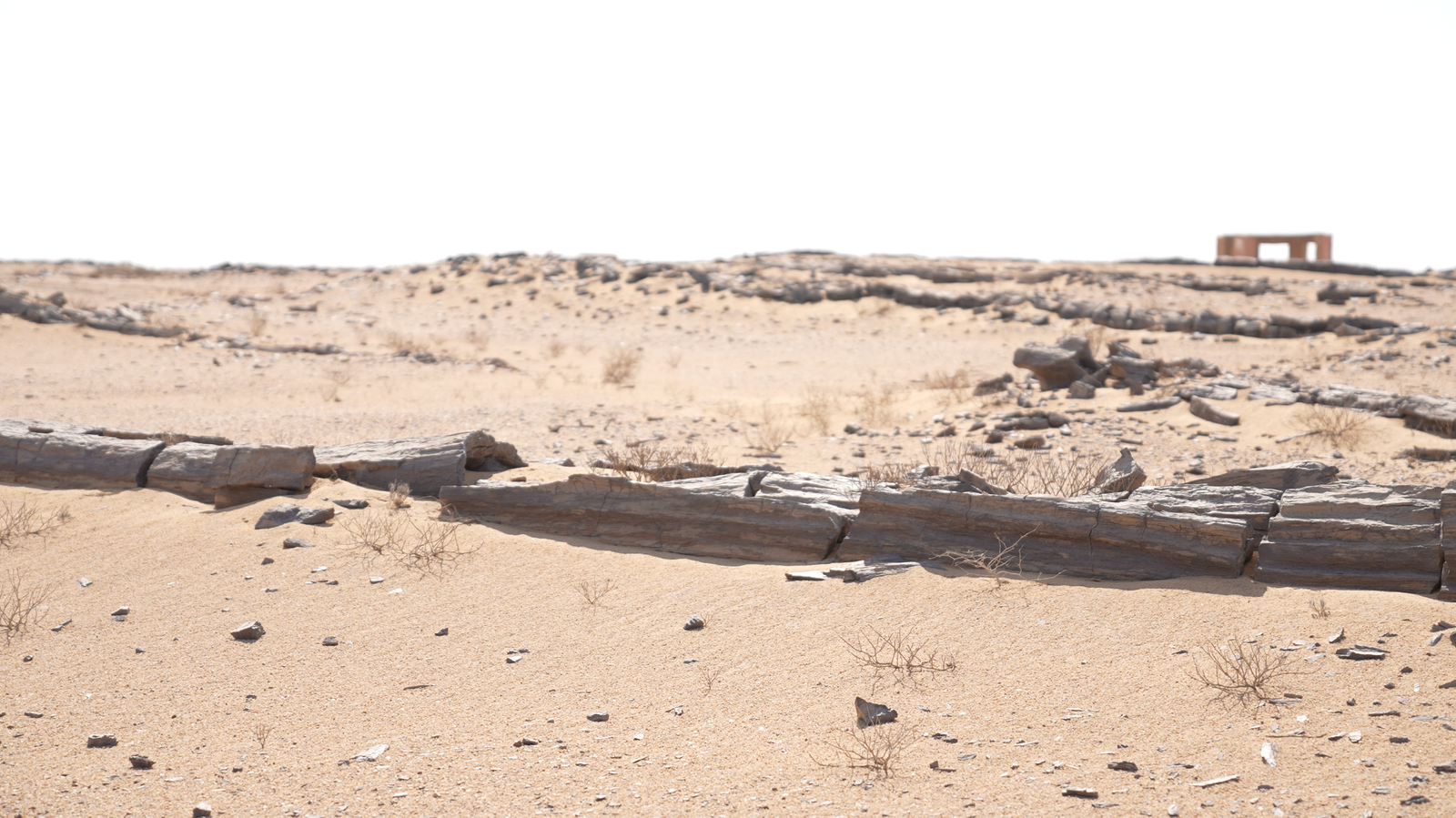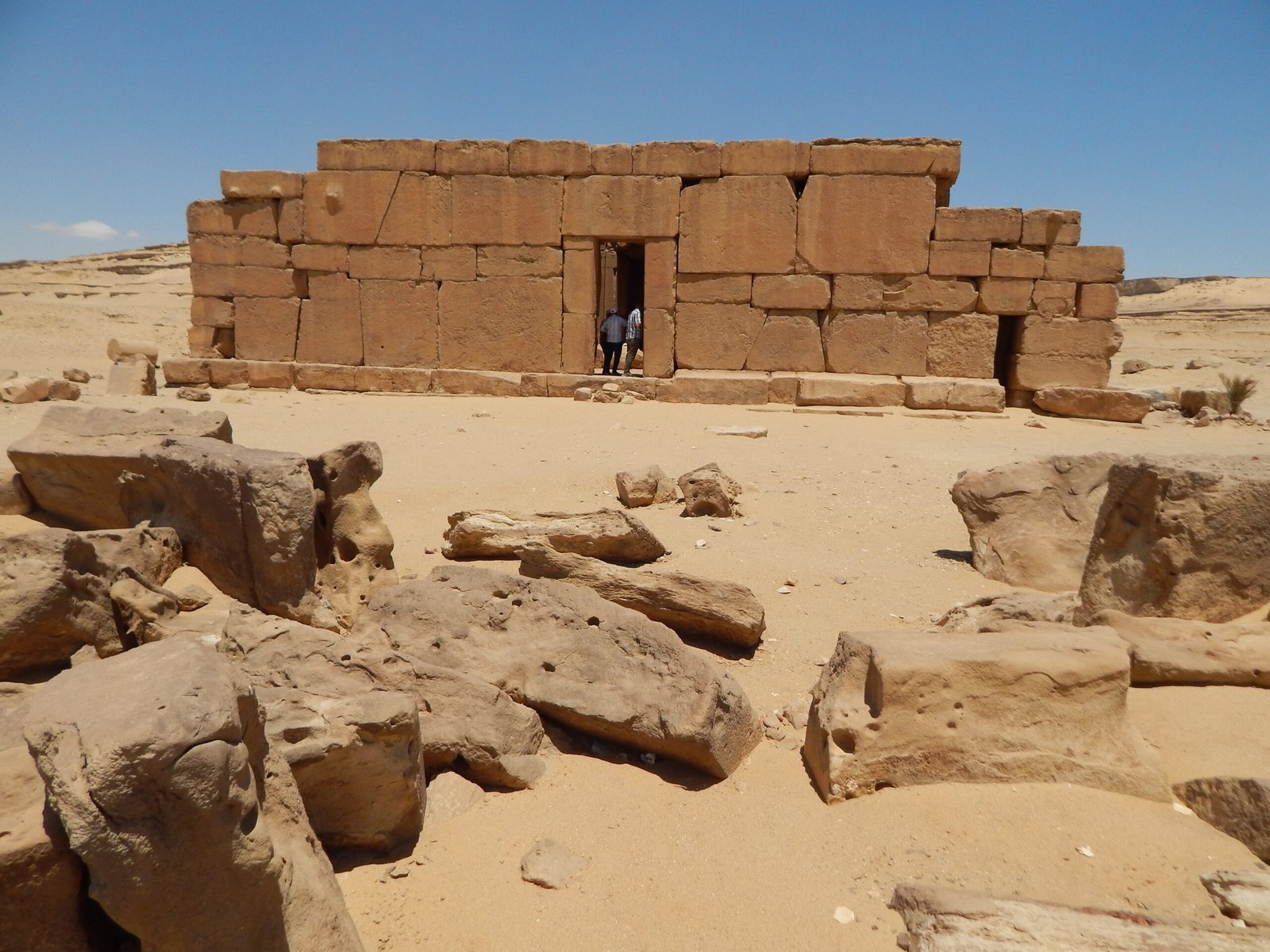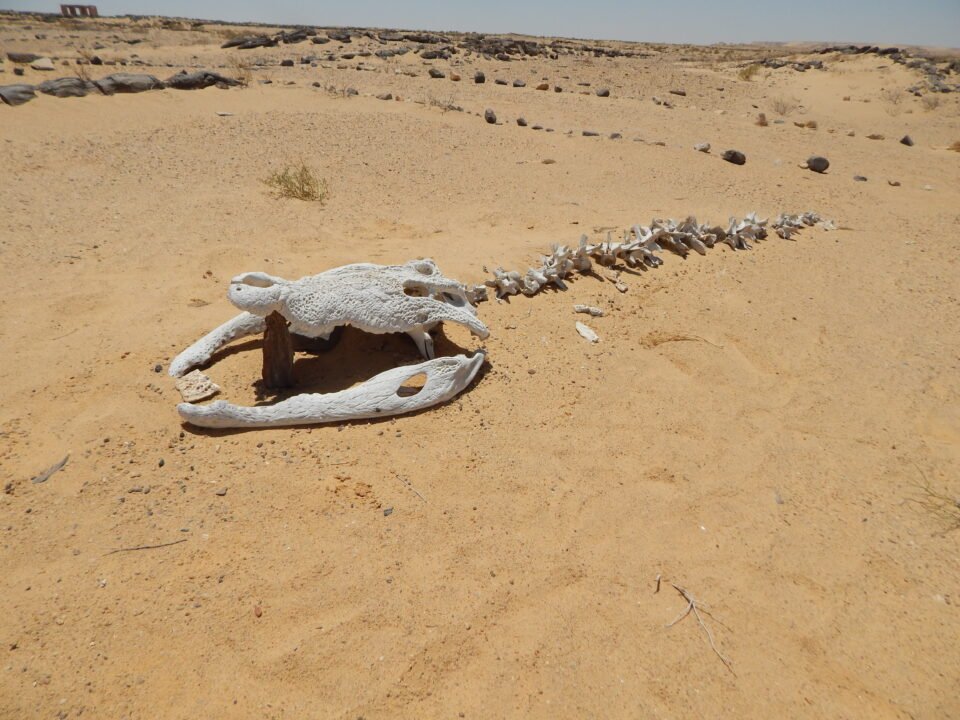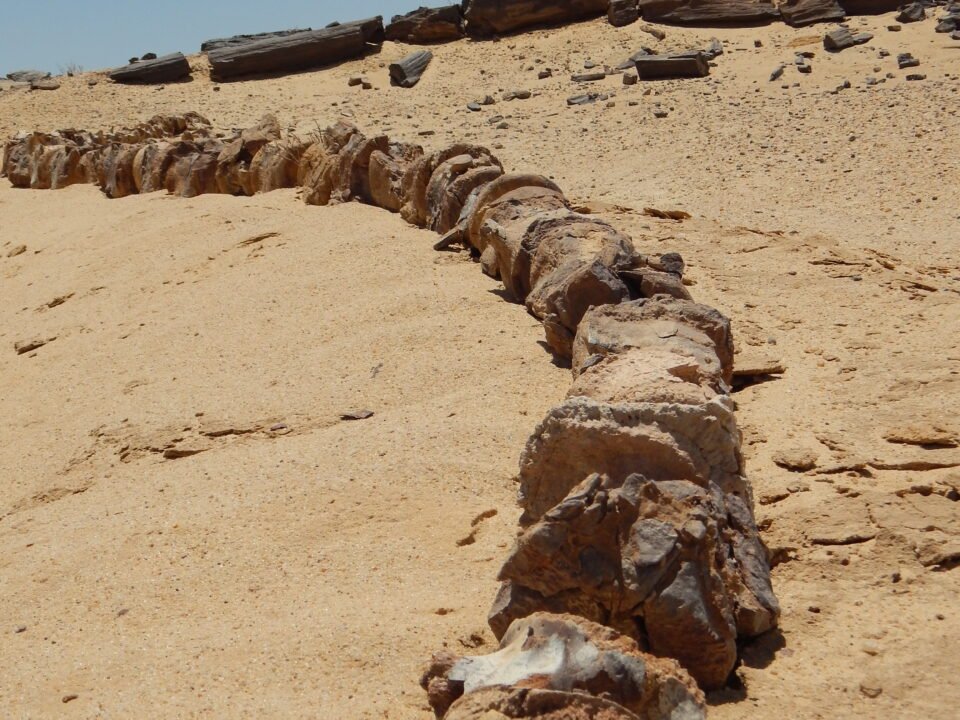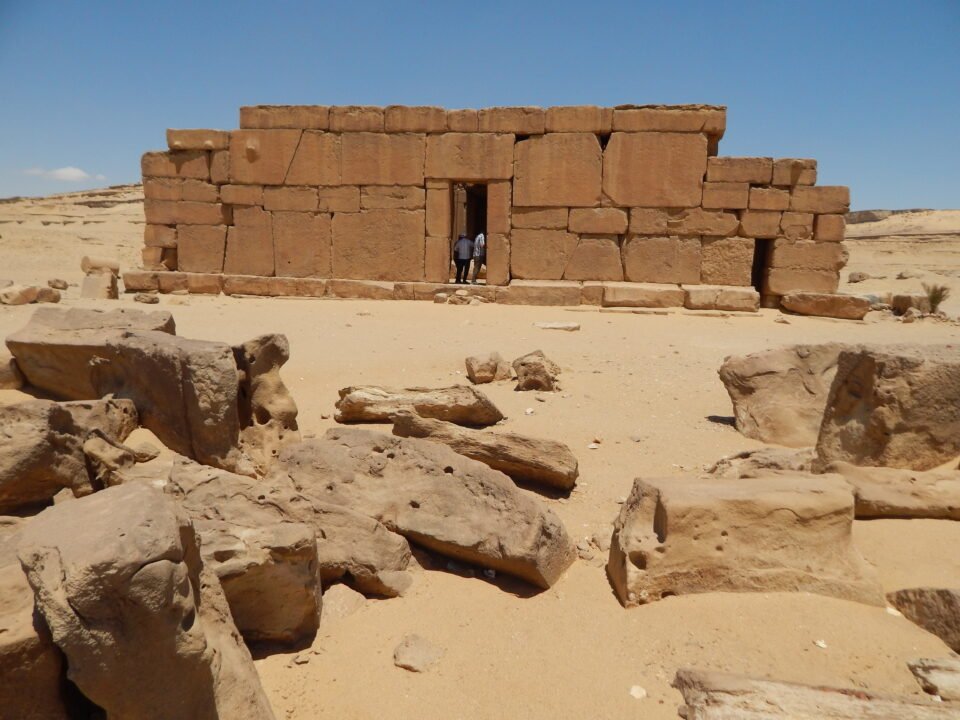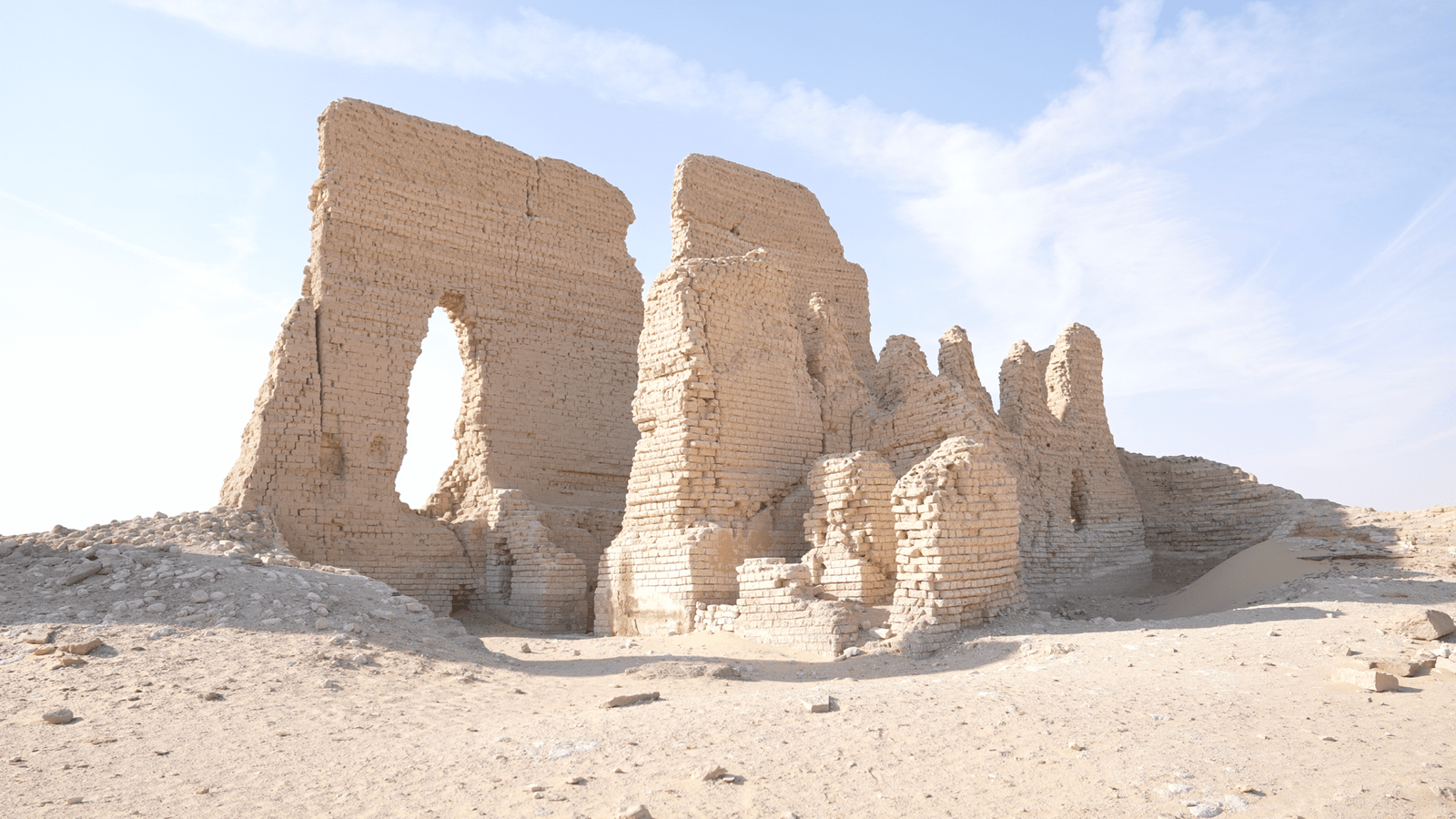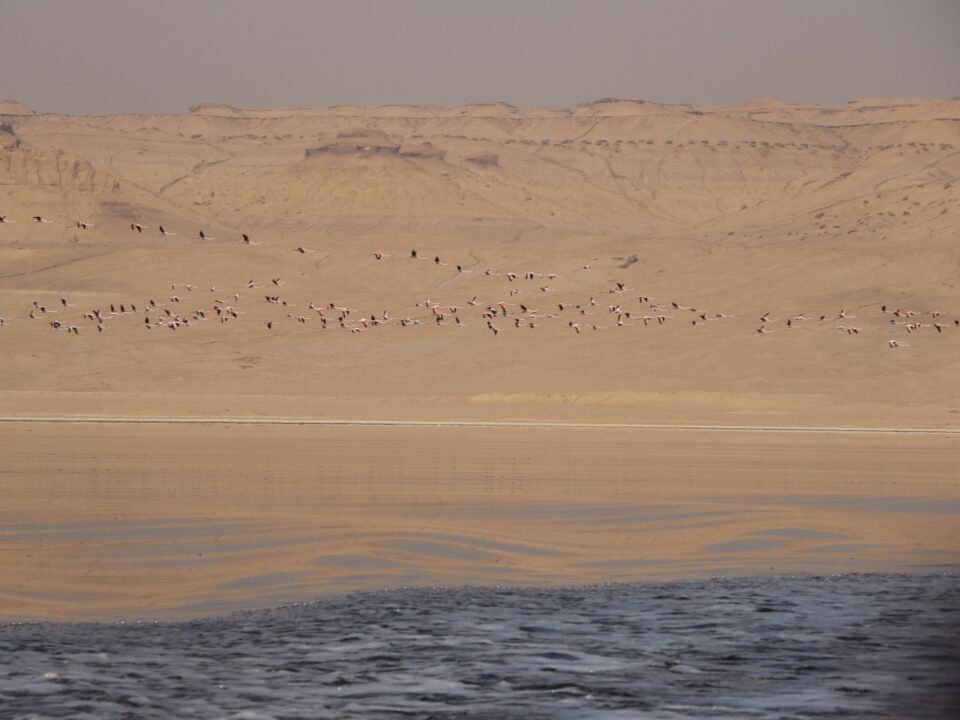Qasr Al-Sagha – Temple of the Ancient Egyptian Workers – (Cultural Heritage)
Qasr Al-Sagha is the temple built by the pharaohs’ workers during the transport of basalt, serving both as a place of worship and as a residence nearby. This Pharaonic temple, dating back five thousand years to the Old Kingdom, was constructed by quarry workers who were cutting basalt from the summit of Gebel Qatrani, west of Widan Al-Faras. The basalt was transported by dragging it over tree trunks along a prepared path from the summit of the mountain to Qasr Al-Sagha, which lay by the ancient shore of Lake Moeris (present-day Lake Qarun), next to the old harbor built directly on the lakeshore. From there, the basalt would be shipped across the lake and through a canal linking Lake Moeris to the Nile, then on to the pyramid areas at Saqqara and Giza. These stones were used to pave pyramid floors and to build tombs, as they were revered for their black color—resembling the fertile silt of the Nile—and believed to prevent the decay of the dead.
The quarrying of basalt at Gebel Qatrani continued for around 150 to 170 years. Although basalt existed in other parts of the Egyptian desert, such as along the Cairo–Suez road and in the Bahariya Oasis, the Gebel Qatrani area was considered the closest and most accessible source for transport to the construction sites at that time.
In the heart of the Egyptian desert, where the traces of time fade beneath the sands of thousands of years, Qasr Al-Sagha stands as a testament to human determination, preserving its name within the folds of history. This unique Pharaonic temple was built by the hands of ancient Egyptian quarry workers—for themselves and by themselves—five thousand years ago. It was not a monument to power, but a sanctuary for spirit and faith.
The workers built the temple while laboring tirelessly to cut and transport the black basalt from Gebel Qatrani to the heart of civilization. They were not merely stonecutters but believers, dedicating this simple shrine to the god Sobek—the mighty crocodile deity who ruled the lake and inspired both fear and reverence. Constructed from yellow sandstone, the temple comprised seven chambers for worship and two rooms for priests, without inscriptions or decorations, for it was a place of prayer, not display. Though today it appears as a single-story structure, archaeological evidence suggests it originally had two stories, making it an architectural rarity for its time.
Around it lie the remains of mudbrick houses and tombs where these craftsmen lived, leaving behind a silent story of lives filled with labor and faith.
Qasr Al-Sagha is not merely a ruin; it is a living fragment of history, holding within its walls the story of unknown people who loved their gods and left us an eternal legacy beneath the desert sands.
The Ancient Harbor – The Water Gateway for Pyramid Stones – (Cultural Heritage)
The “Ancient Harbor” consists of separate elevated plateaus along the old shoreline of Lake Moeris, used by the pharaohs to store and transport basalt brought from the summit of Gebel Qatrani by boat to the pyramid areas. Large accumulations of basalt stones remain on these high grounds, prepared for transport.
On the ancient banks of Lake Moeris, a series of isolated hills bear witness to one of the earliest and greatest engineering projects of ancient Egypt. Here, at the end of the great basalt route stretching from the heart of Gebel Qatrani, stood a strategic hub known today as the “Ancient Harbor”—the final launch point for the sacred basalt stones on their journey to build the pyramids.
In this coastal zone, massive basalt blocks from five major quarries were gathered, awaiting loading onto boats that crossed the lake, navigated canals to the Nile, and then continued to Giza and Saqqara. There, the stones were used to pave the floors of tombs and royal passageways.
Archaeological missions have uncovered neatly organized piles of basalt atop these plateaus, as if poised for departure—ready to begin their immortal journey toward architectural glory. This harbor was not simply a transport station; it was a vital link in a remarkable logistical network designed by the ancient Egyptians with precision, making the black basalt stones a bridge between mountain and temple, between nature and eternity.

